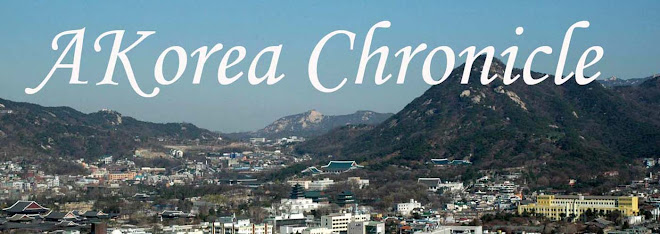
On our very first day in Seoul we couldn't wait to experience Korea. (This was made possible because my luggage went to France so I didn't have anything to unpack) On our first foray into
Seoul we visited the largest palace Gyeongbokgung. We were amazed at the size and the beauty of the ornate design. It is the grandest of the five palaces from the period.
It was originally built in 1394 as the main palace of the Joseon Dynasty by its founder King Taejo.
Built at the beginning of the Joseon Dynasty when the Yi Dynasty moved the capital to Seoul,
 the palace remained the main seat of power for Korea for much of the time to the present.Gyeongbok means shining happiness.
the palace remained the main seat of power for Korea for much of the time to the present.Gyeongbok means shining happiness.http://www.lifeinkorea.com/Travel2/66
(Some of the information on the palace was taken from the Life In Korea website)
It was destroyed during the Japanese invasion of 1592 and left in ruins for over 250 years. Starting in 1865, it was rebuilt to its original grandeur. When Korea was annexed by Japan in 1910, most of the 200 building on the palace grounds were torn down by the Japanese, leaving only a dozen structures. The map near the front entrance shows the arrangement of the complex during the latter part of the reign of King Kojong. It shows the major hails, pavilions, offices, storerooms, gates and bridges of the 419,100 square meter grounds.

Kyeonghoe-ru is the largest pavilion in South Korea and has been designated National Treasure #224. Supported by 48 stone pillars and set in a lotus pond, the pavilion was a favored place for the King to entertain visiting dignitaries. King Taejo, founder of the Chosun Dynasty and builder of Gyeongbok Palace, had the pavilion erected on this man-made lake in the western section of the palace. He named Kyeonghoe for "joyous meeting."

It is an interesting aspect of all of the palaces is that they have
beautiful retreats where the royalty could study and reflect or entertain.

Another fascinating aspect of the palace architecture is the many chimneys. The palace buildings had floor heat and the chinneys provided the exhaust for this heating system. It was
 a precursor to the present day ondol heating that is used in present day Korea.
a precursor to the present day ondol heating that is used in present day Korea.We were fortunate to be there when there was a reenactment of the changing of the palace guard
It was a very colorful performance.
More information is available about the palace and other
aspects of Korea at www.Tour2Korea.com
http://english.visitkorea.or.kr/enu/SI/SI_EN_3_6.jsp?cid=262361
It was a great introduction to the many interesting discoveries that we experienced during our time in Korea.
Stay tuned for more adventures!


3 comments:
Hi Cindy
The palace pictures are beautiful. Thanks for sending them.
this is grand! Inlaws come in 2 weeks. We plan to take them there. The square out in front of the palace in front of the US embassy was just finished too!
great info on a place we normally don't think about.
Post a Comment